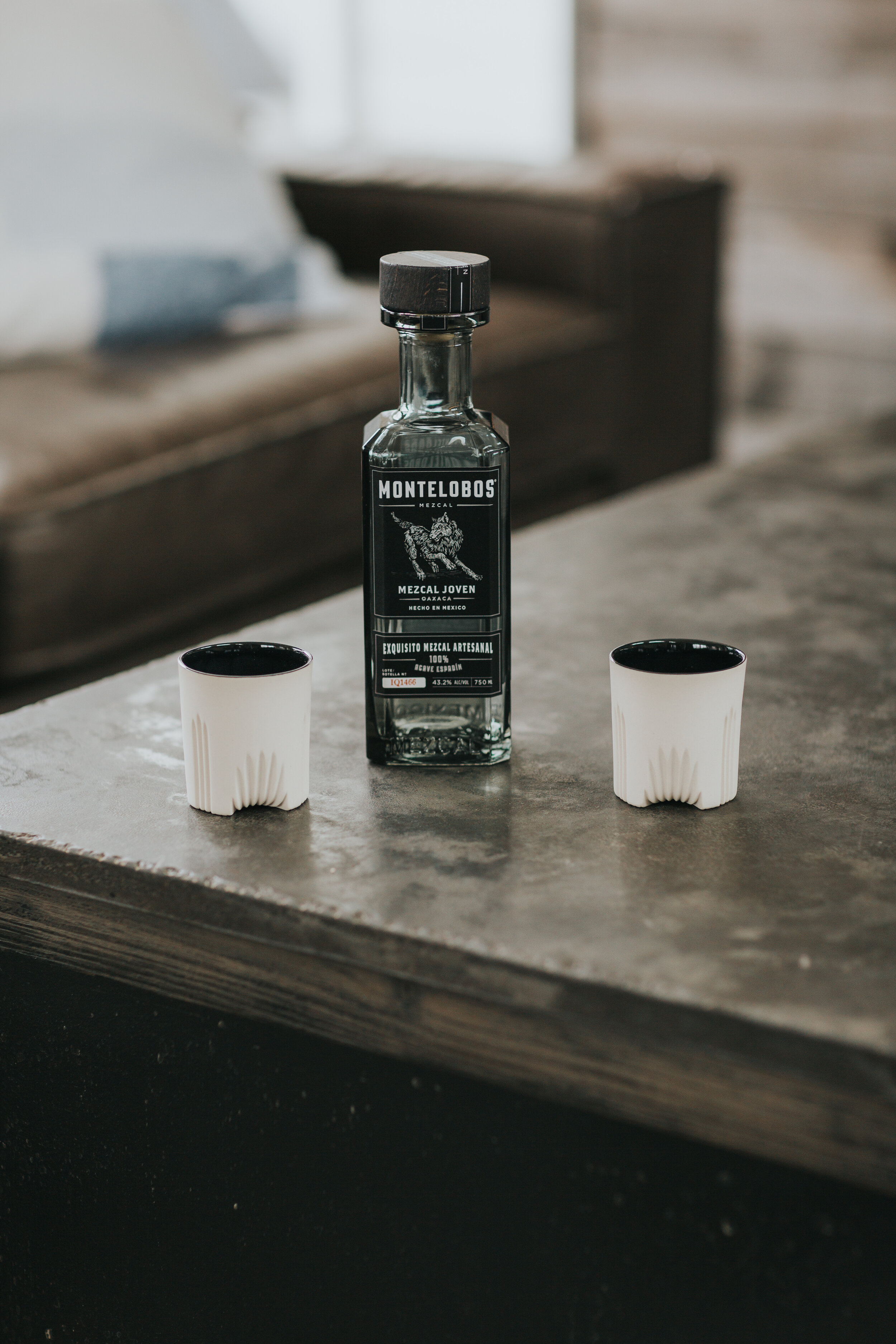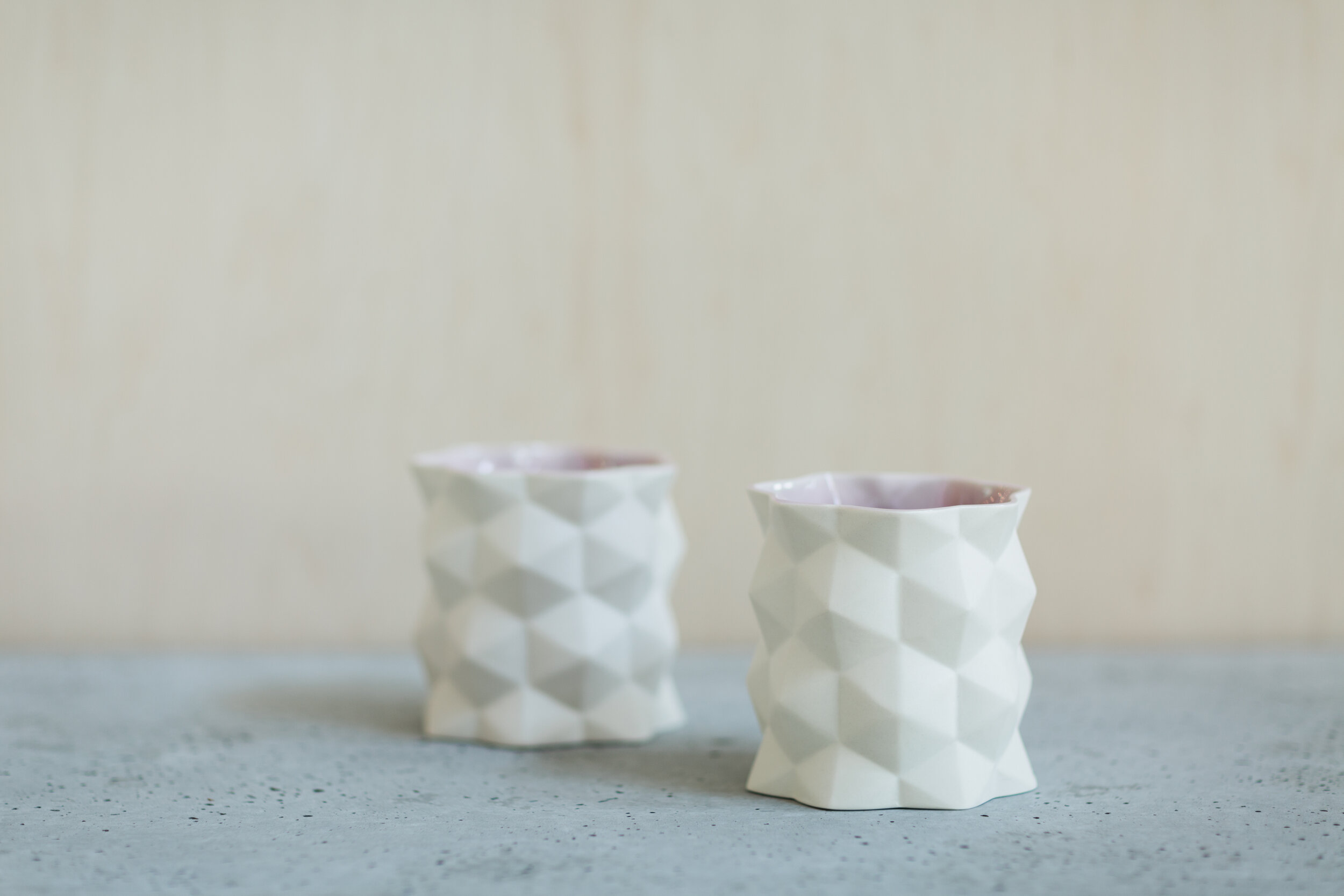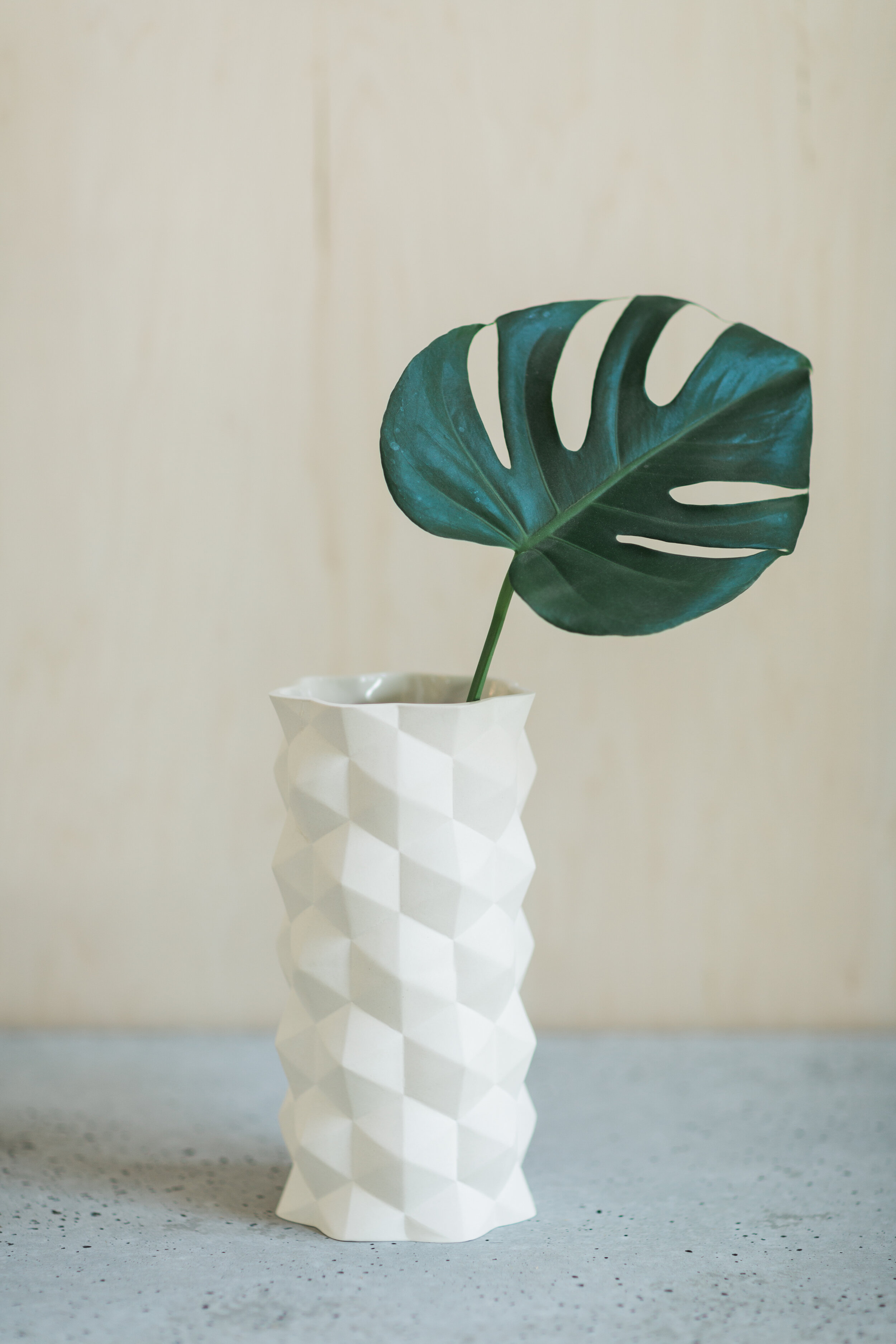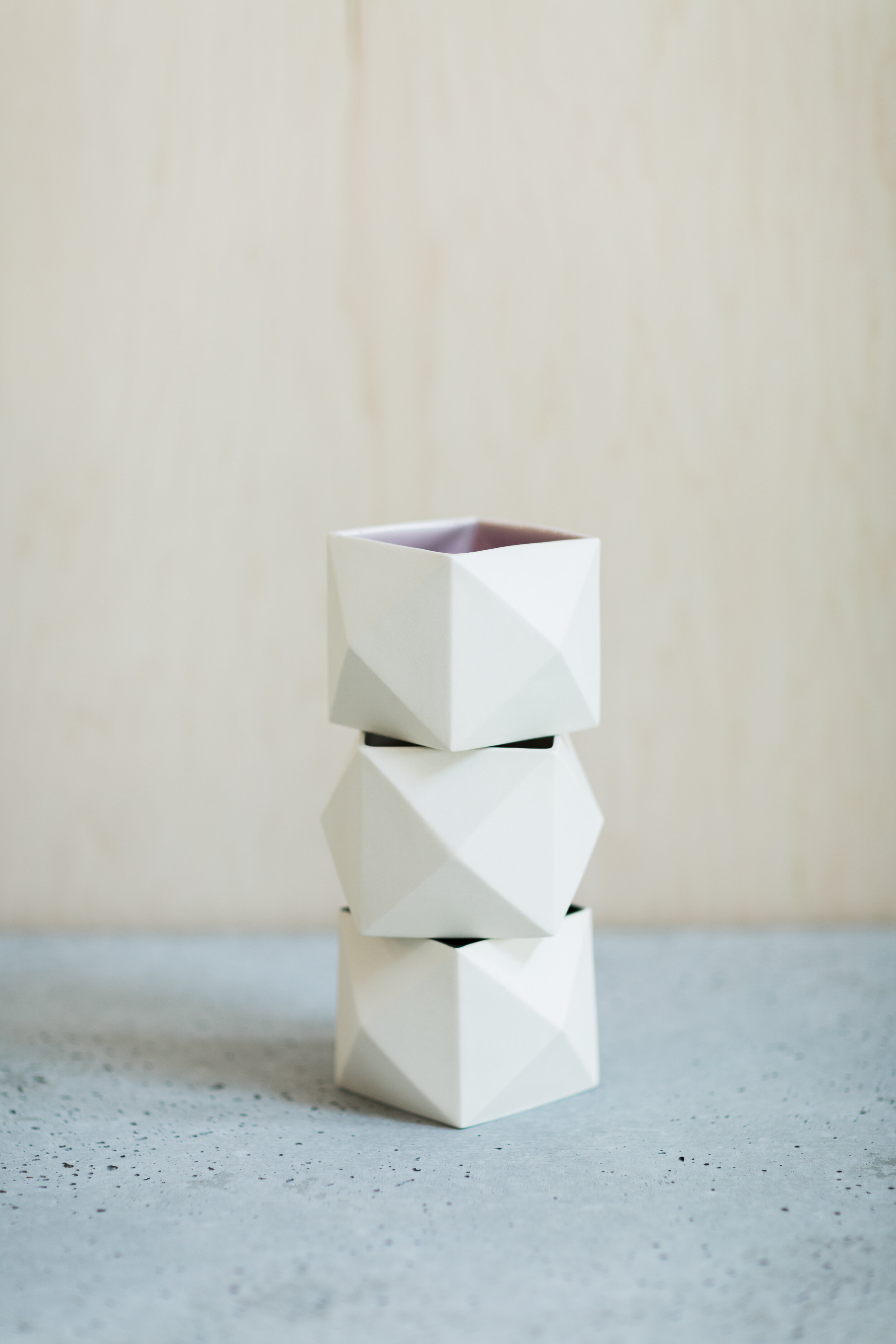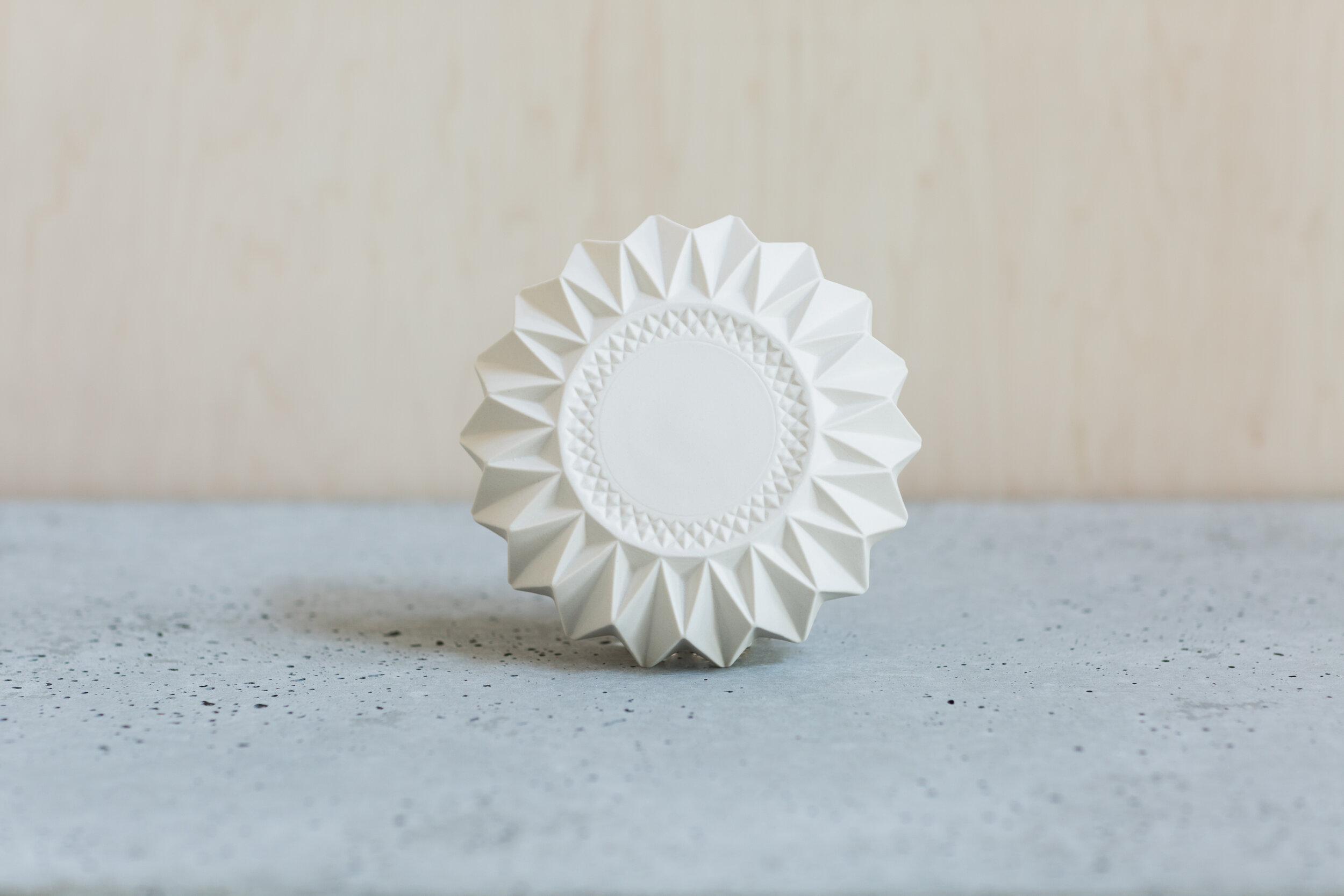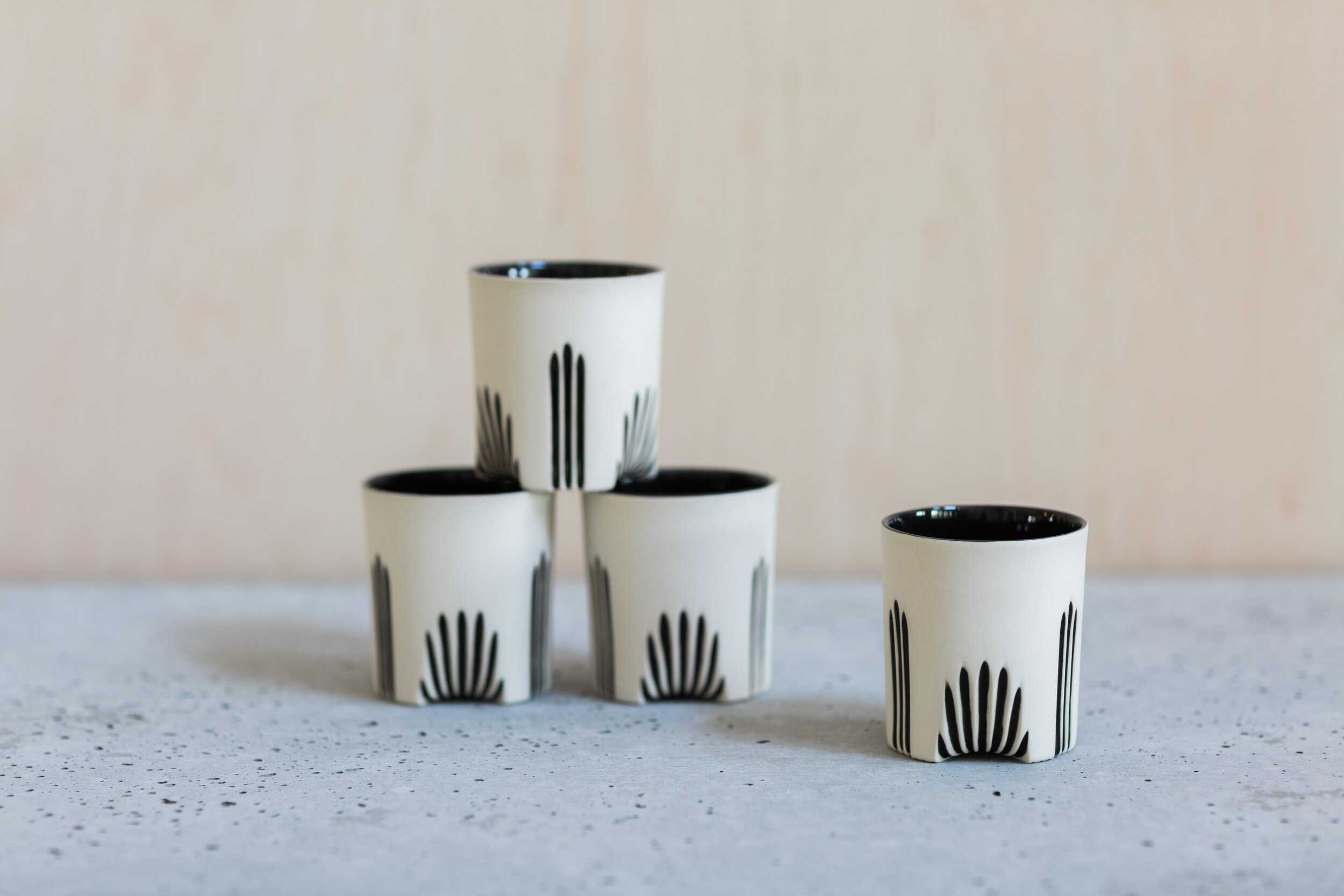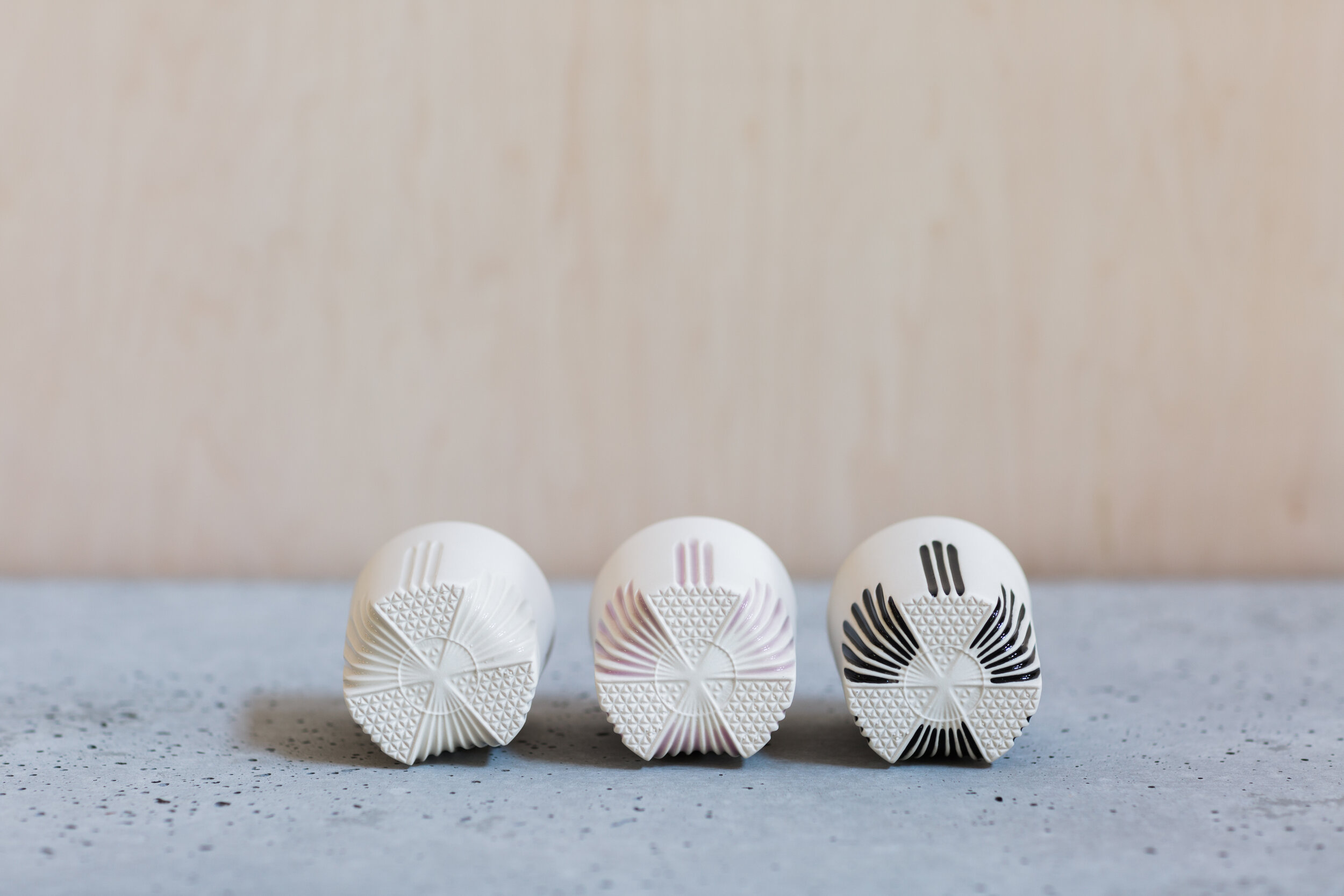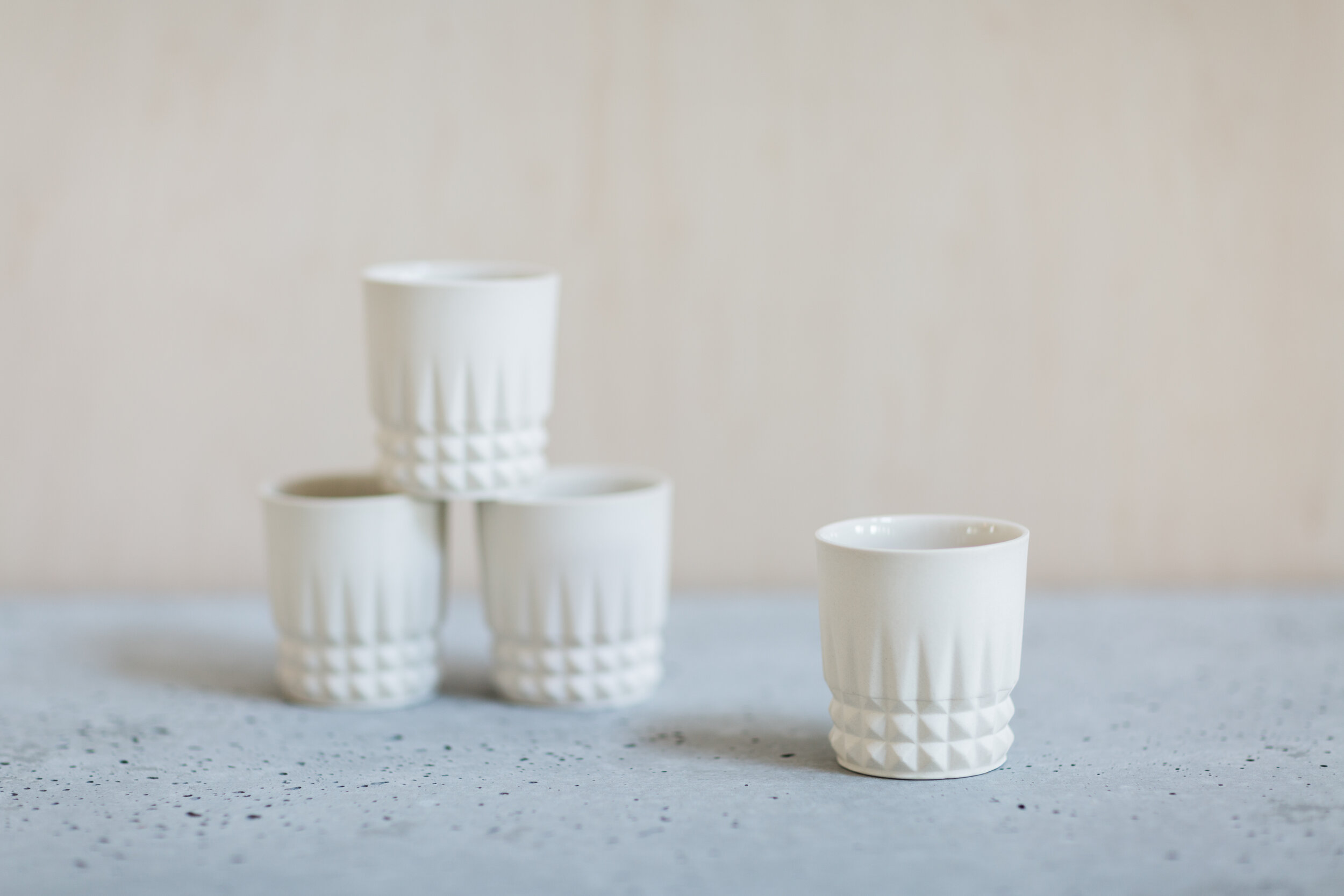Liz Heller is the Aspen artist behind mod crmx, a line of functional porcelain vessels. Liz has an MFA in Sculpture from The University of Wisconsin at Madison and has been Aspen-based since 2015. When Liz isn’t working in her Red Brick Center for the Arts studio, or teaching at the Aspen campus of Colorado Mountain College, you’ll find her consumed by her other passion, training with The Aspen Triathalon Club.
Liz and I connected over Instagram just as she was embarking on a relaunching of her website. We collaborated over several months, doing a “meet the maker” photo session in the ceramics studio at CMC Aspen, documenting her work for her website/wholesale market/and Etsy, and creating lifestyle content showing her pieces in use.
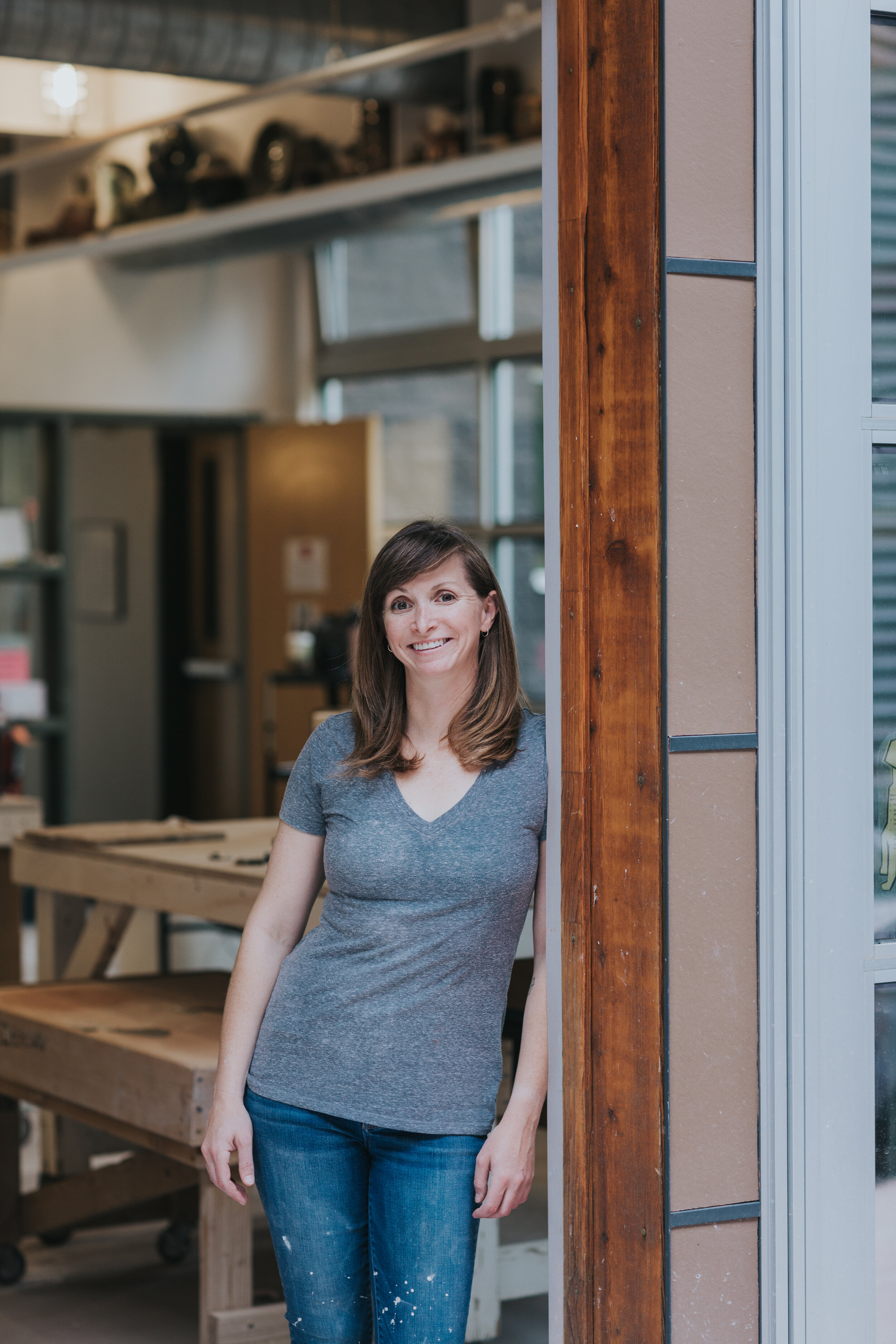
Liz Heller of mod crmx outside the ceramics studio at the Aspen Campus of Colorado Mountain College.
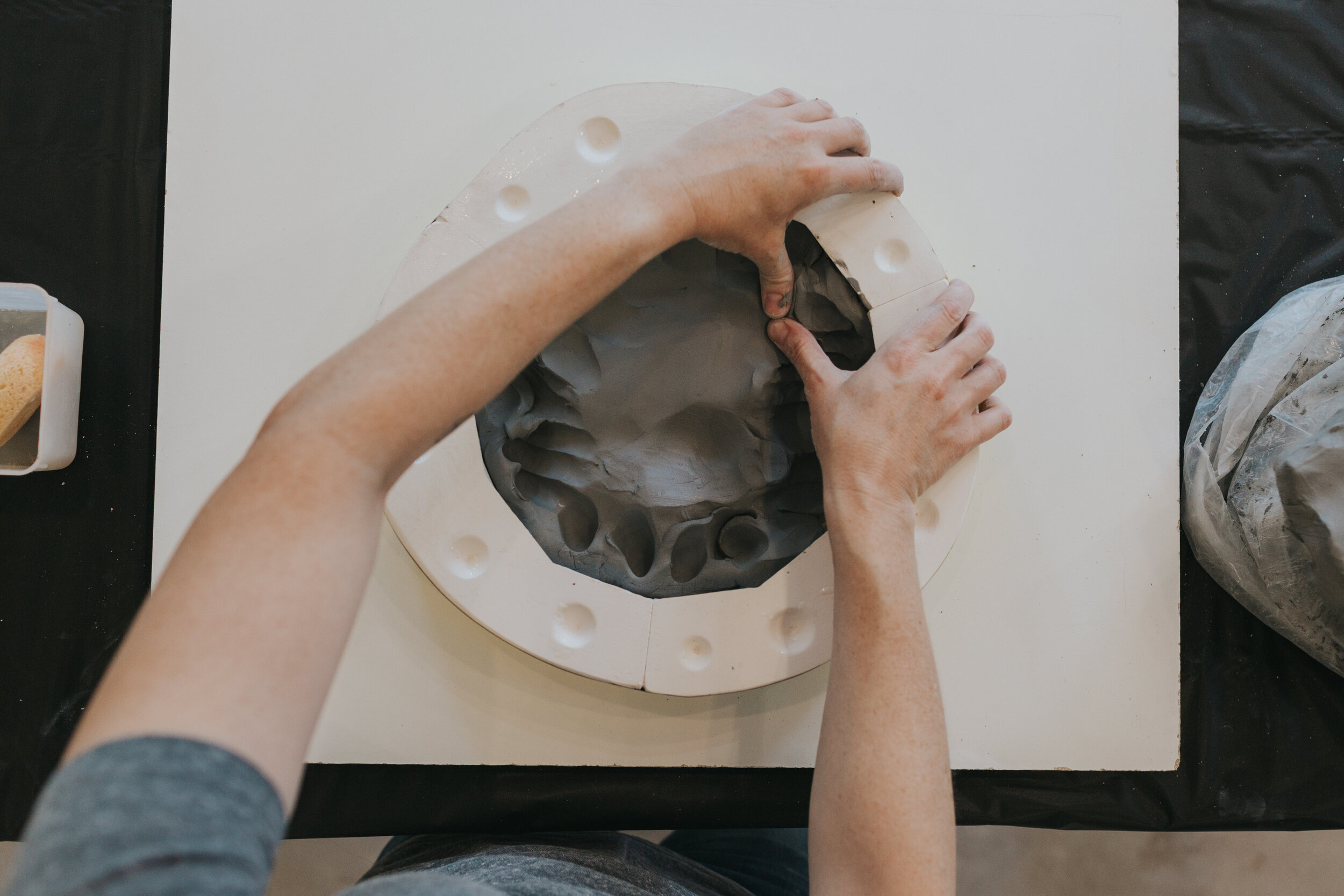
Liz must first assemble a form to create a mould.

The form gets filled with clay to create the next layer.
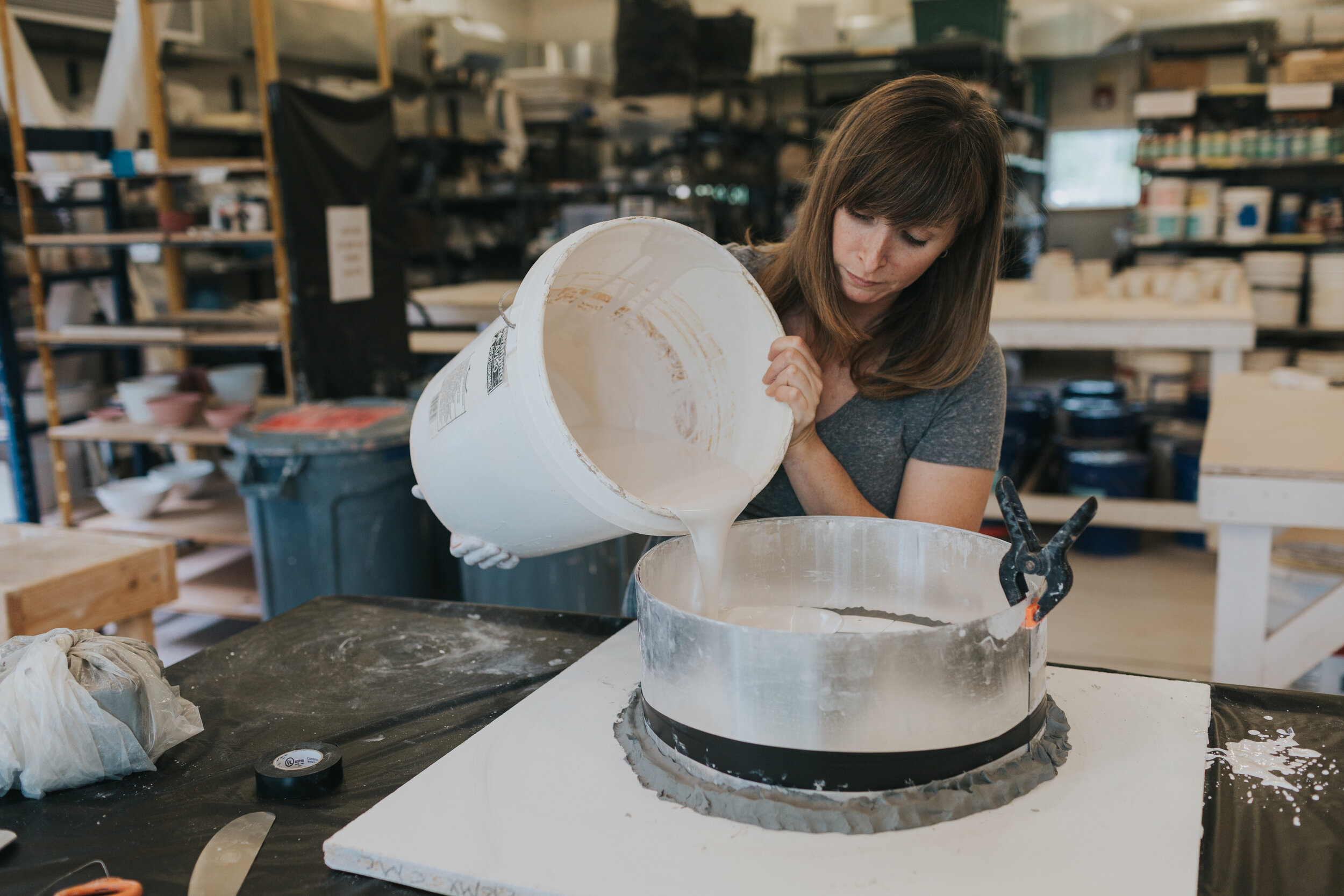
Liz pours material onto the form to add the next layer.

Once the form has dried, it is taken apart to reveal the mould inside.
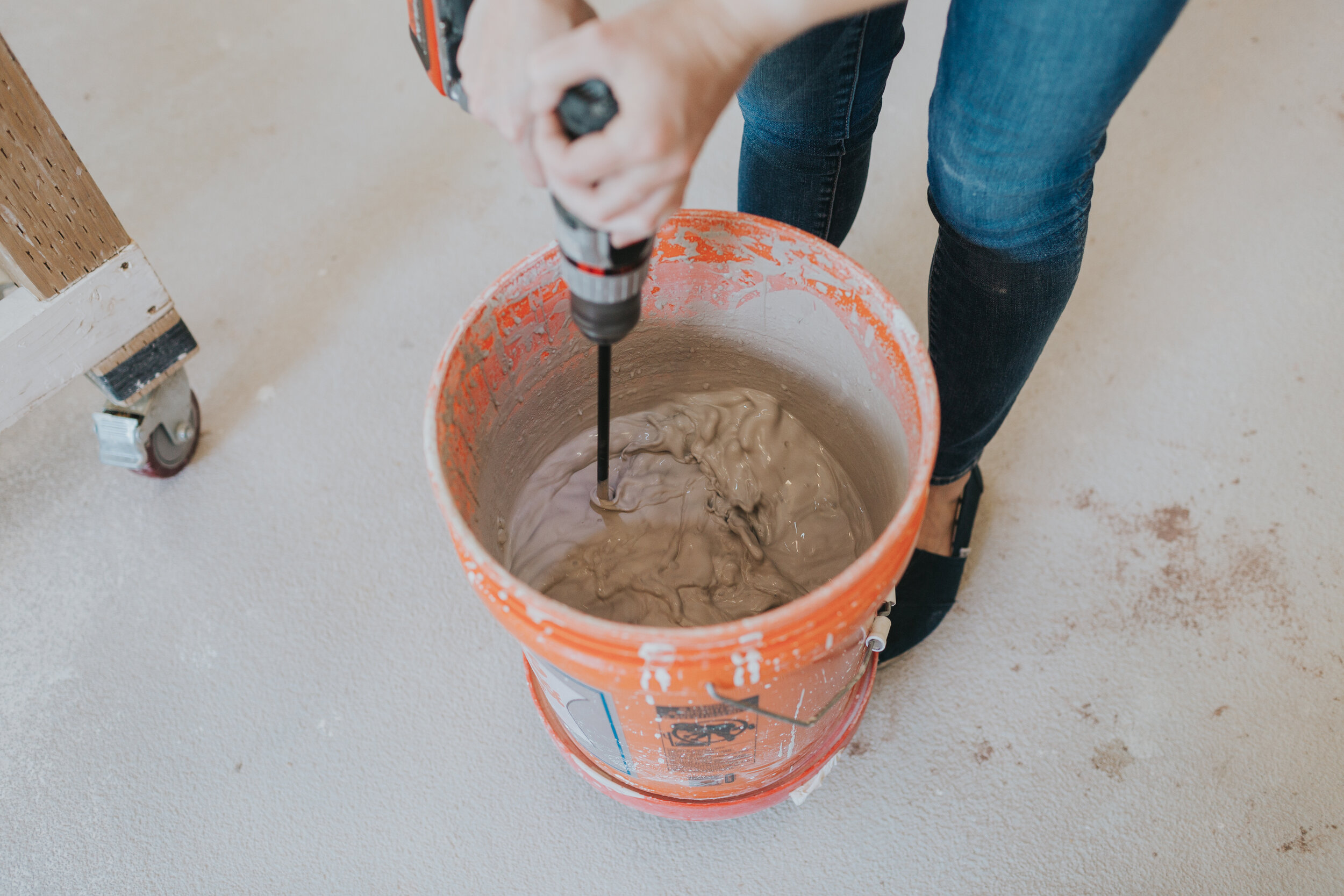
Liz does a style of ceramics called “slipcasting” where porcelain slip is poured into a mould to create a vessel.
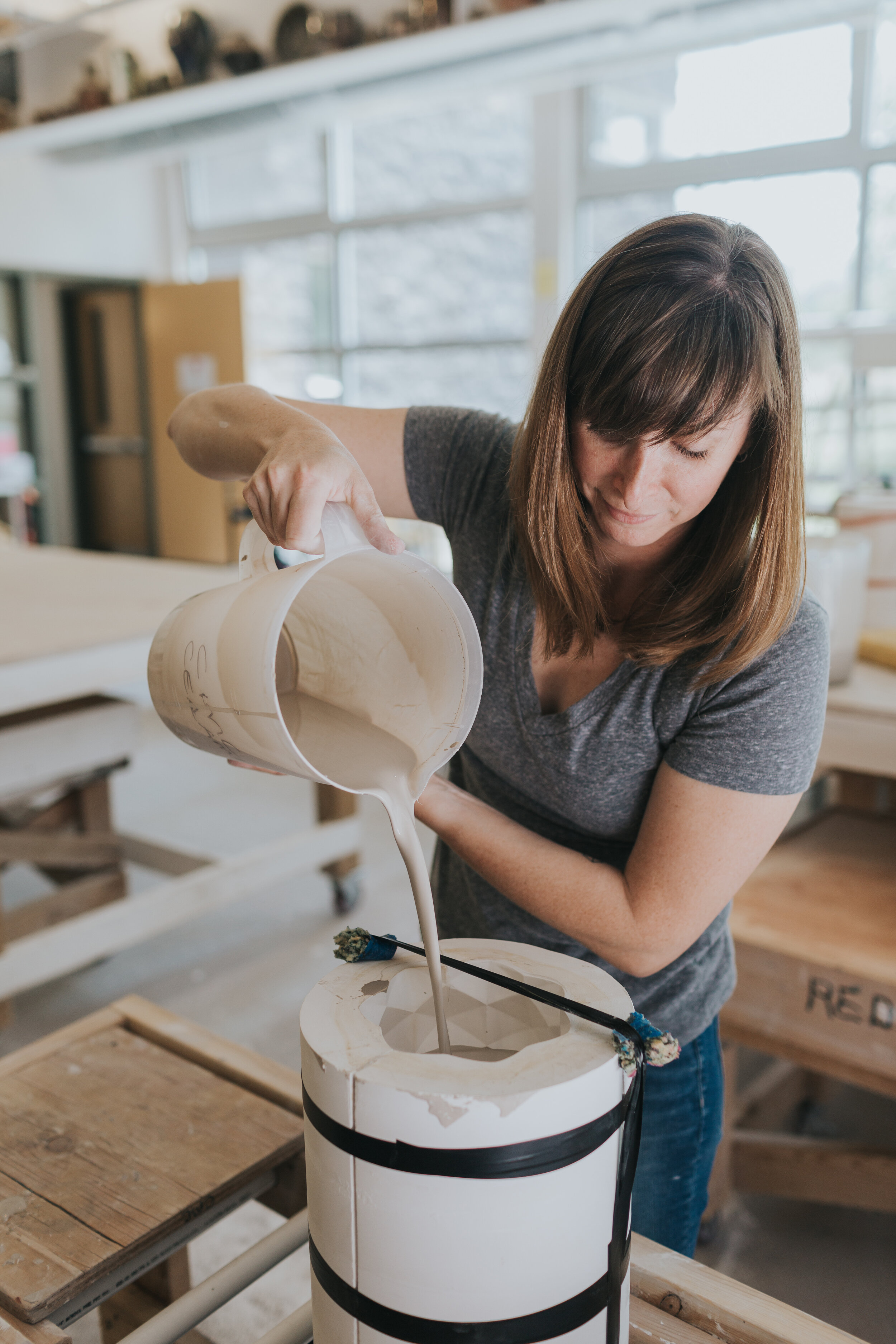
Liz pours the porcelain slip into a mould made for a vase-shaped vessel.
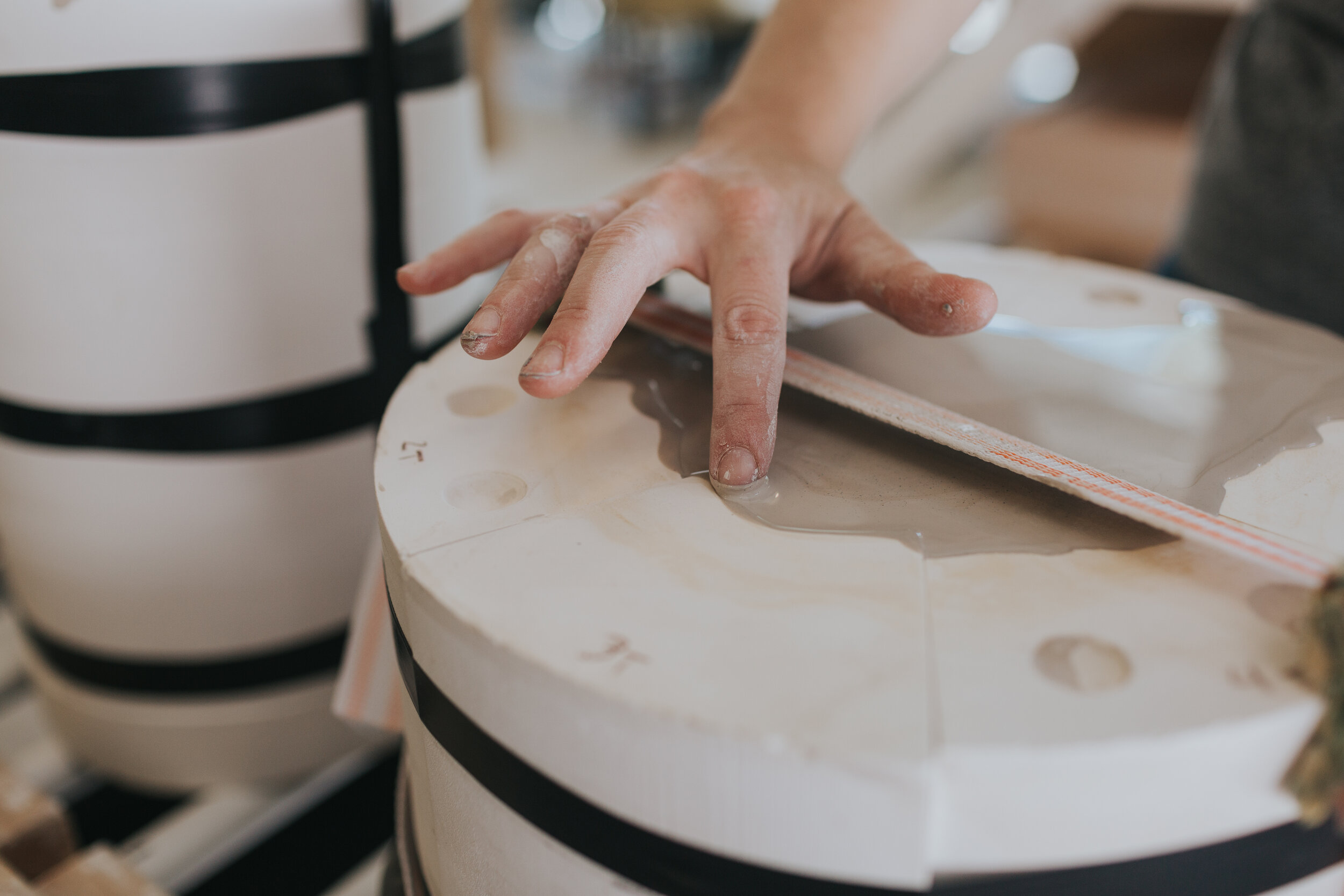
As the mould absorbs moisture Liz will top-off the slip to keep the level up. She uses her finger to seal the slip against the top of mould to prevent separation.
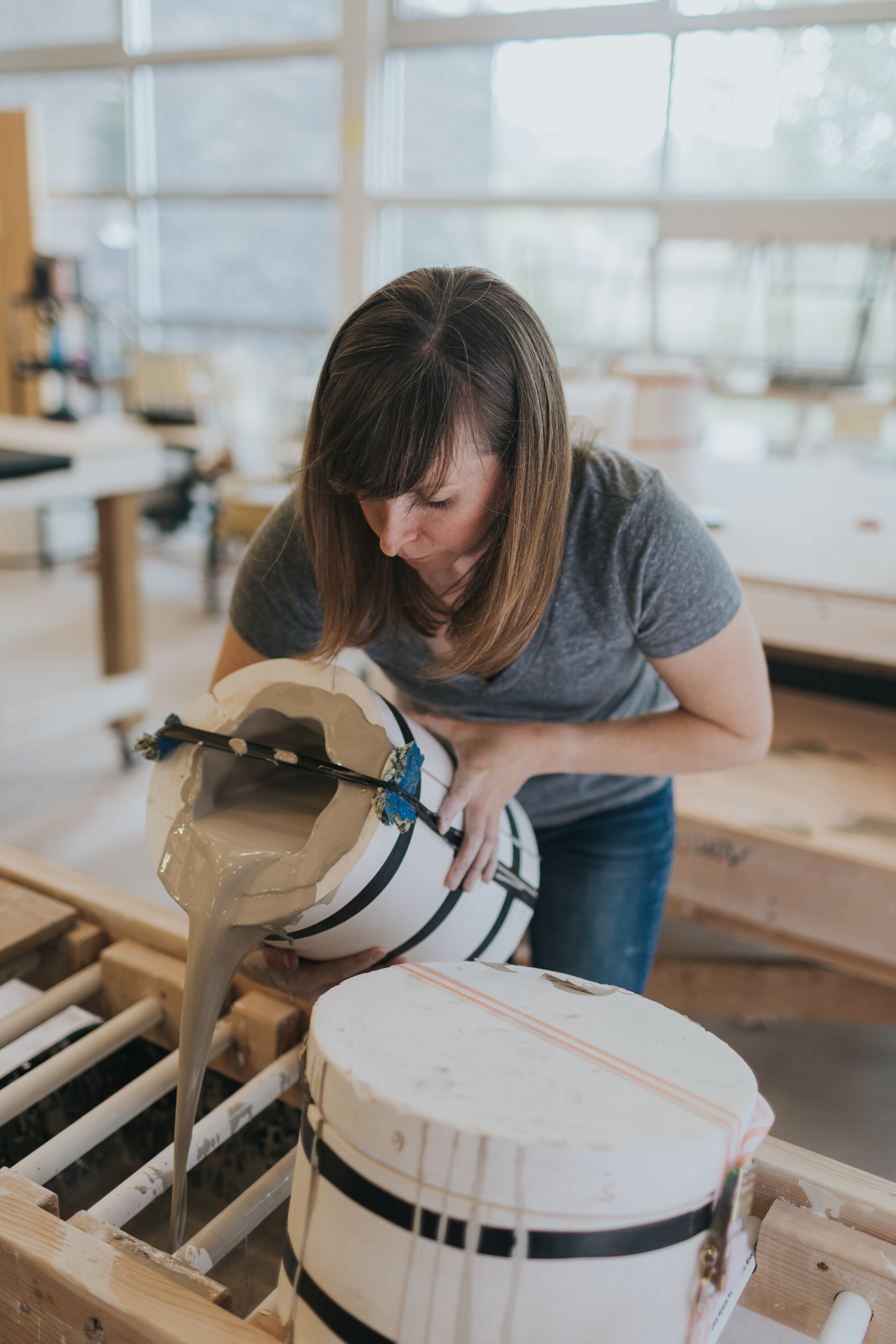
After a specific amount of time required to get the correct thickness of vessel, Liz pours out the excess slip.
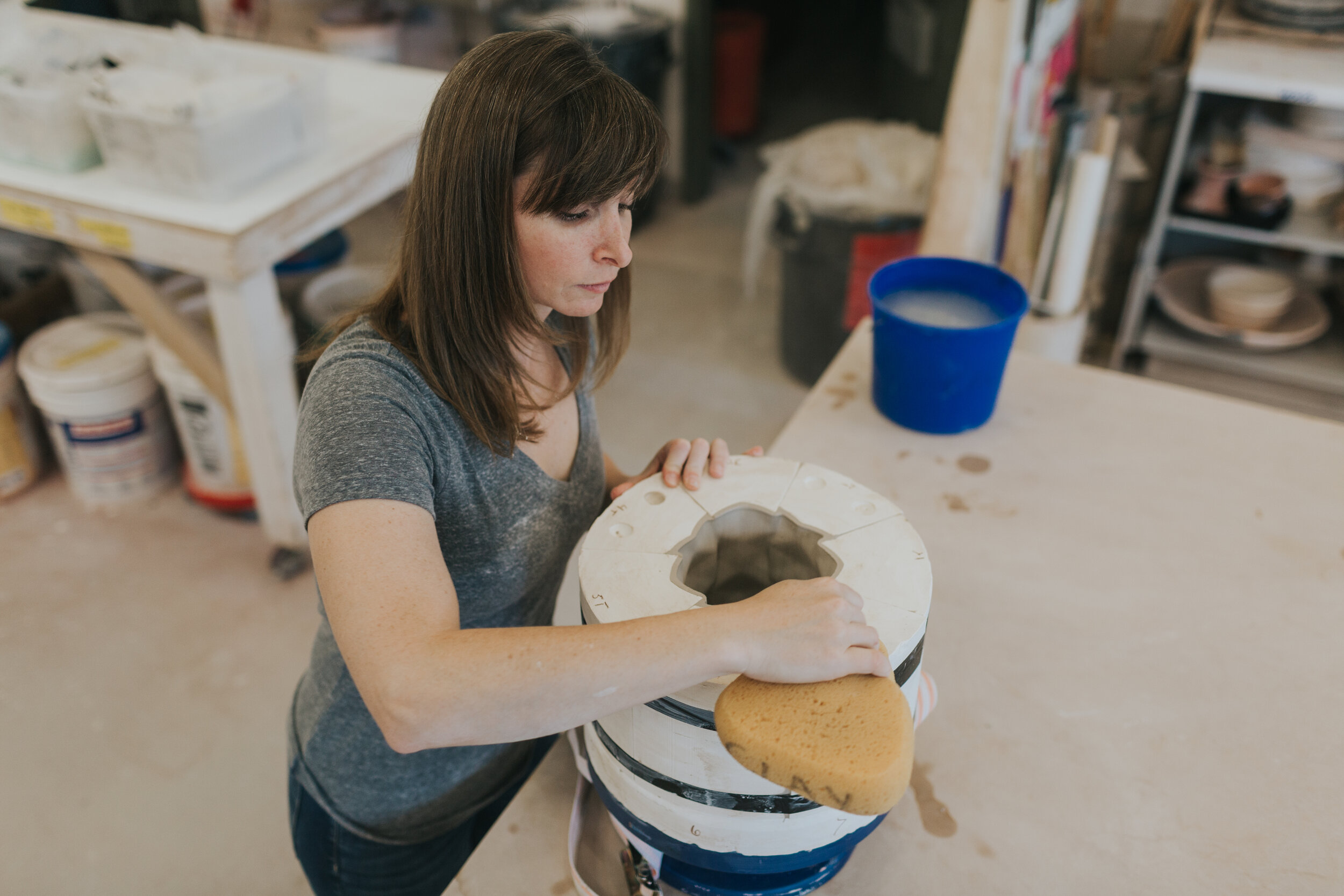
Liz cleans the top of the mould to get a cleaner vessel lip on the cast inside.
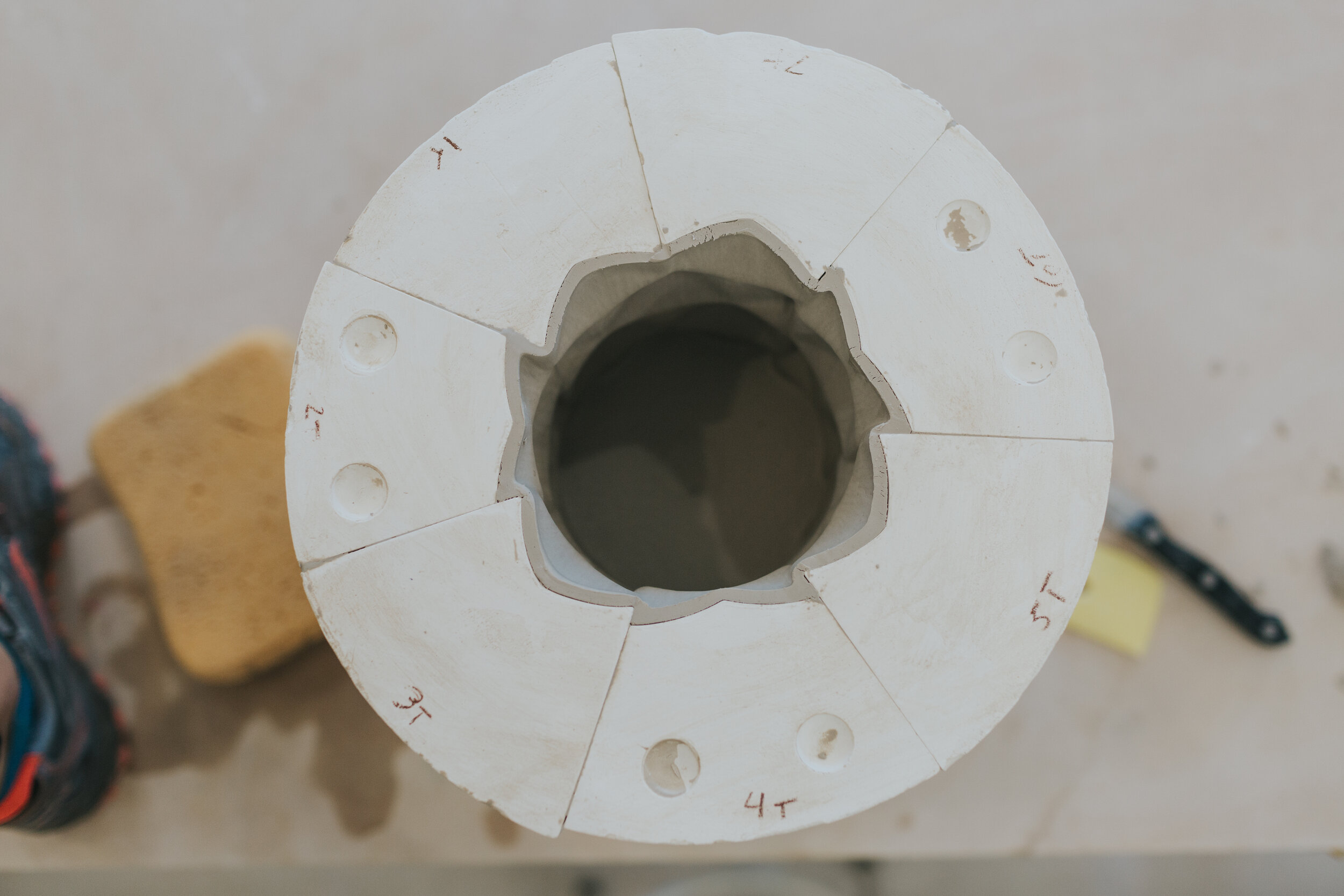
A top-down view of the slip cast vessel inside the mould. Once the cast drys sufficiently, it will be sturdy enough to disassemble the mould.
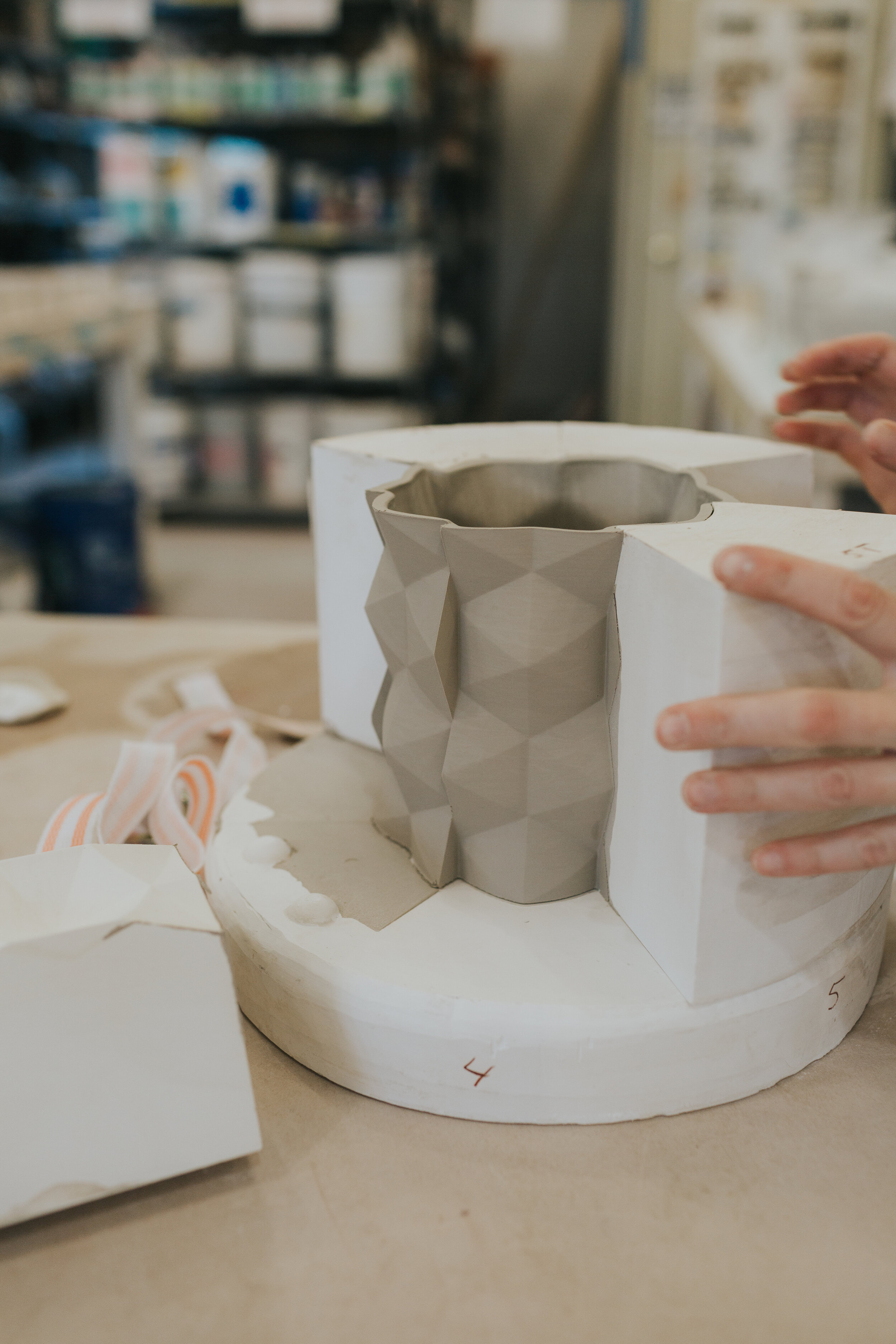
The mould is made of puzzle pieces that can be easily removed.
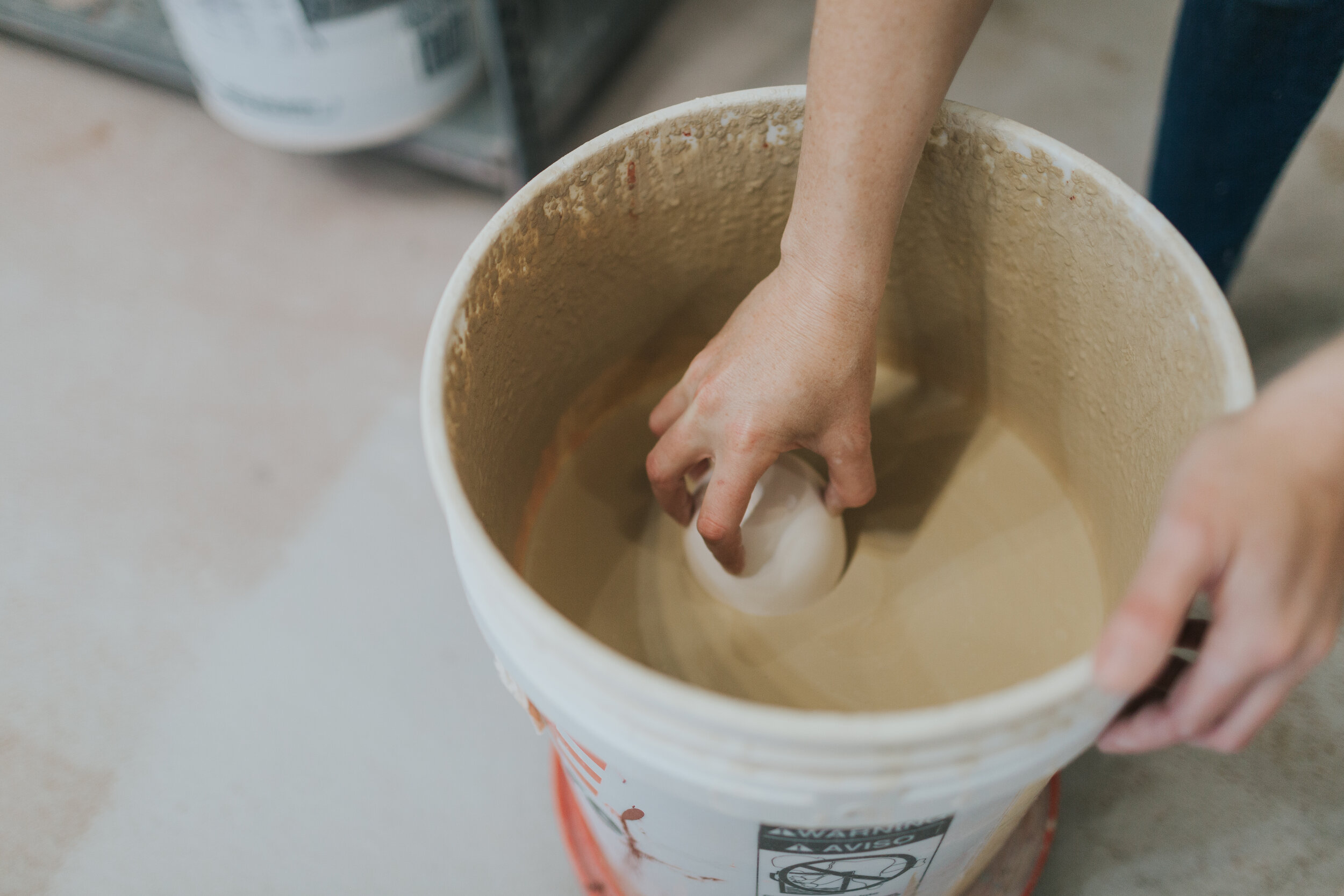
In this image, Liz is glazing a small cup. The color of the wet glaze isn’t always the same color that will appear after it is fired.
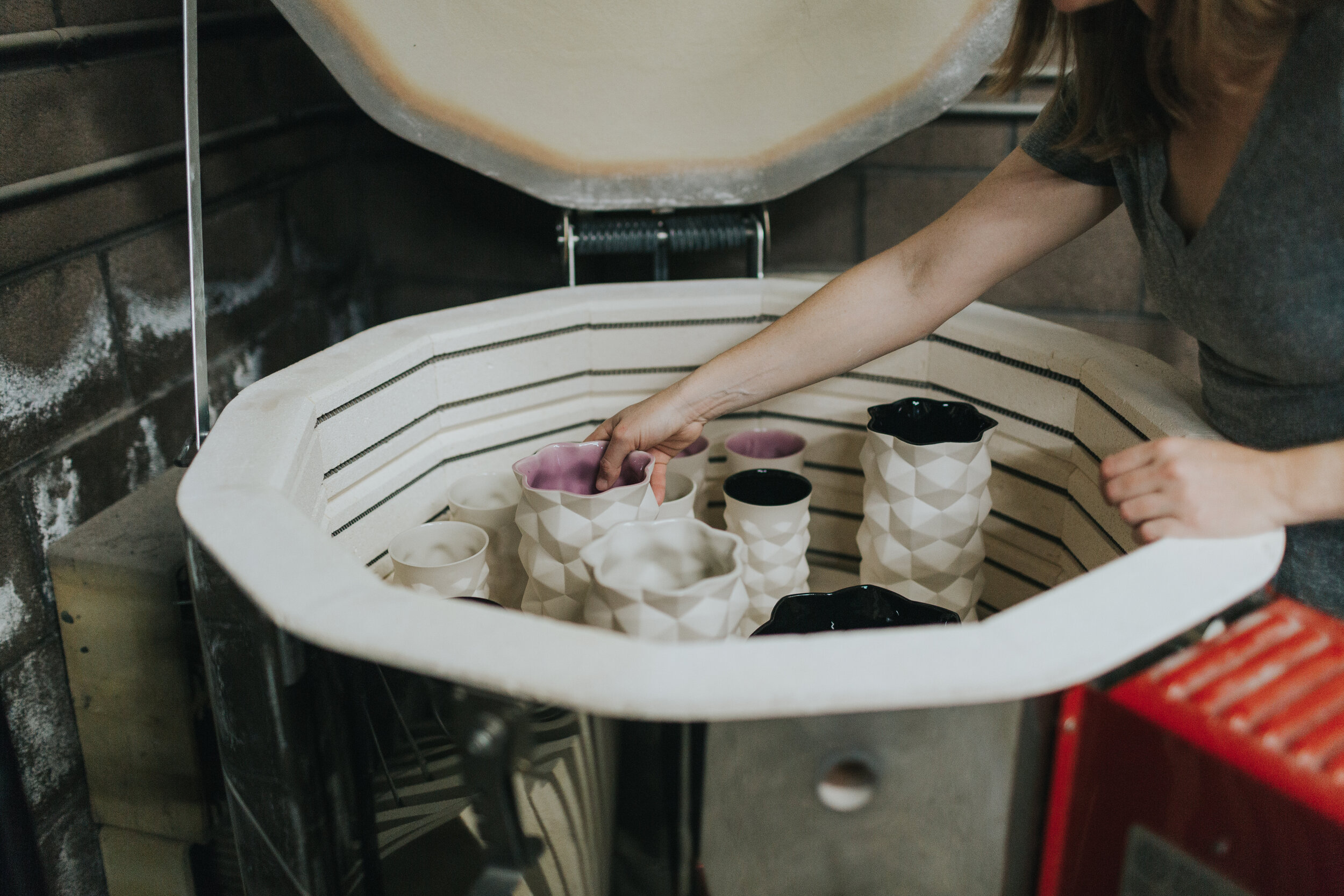
Liz makes primarily modern, faceted vessels with a satin exterior and shiny interior.
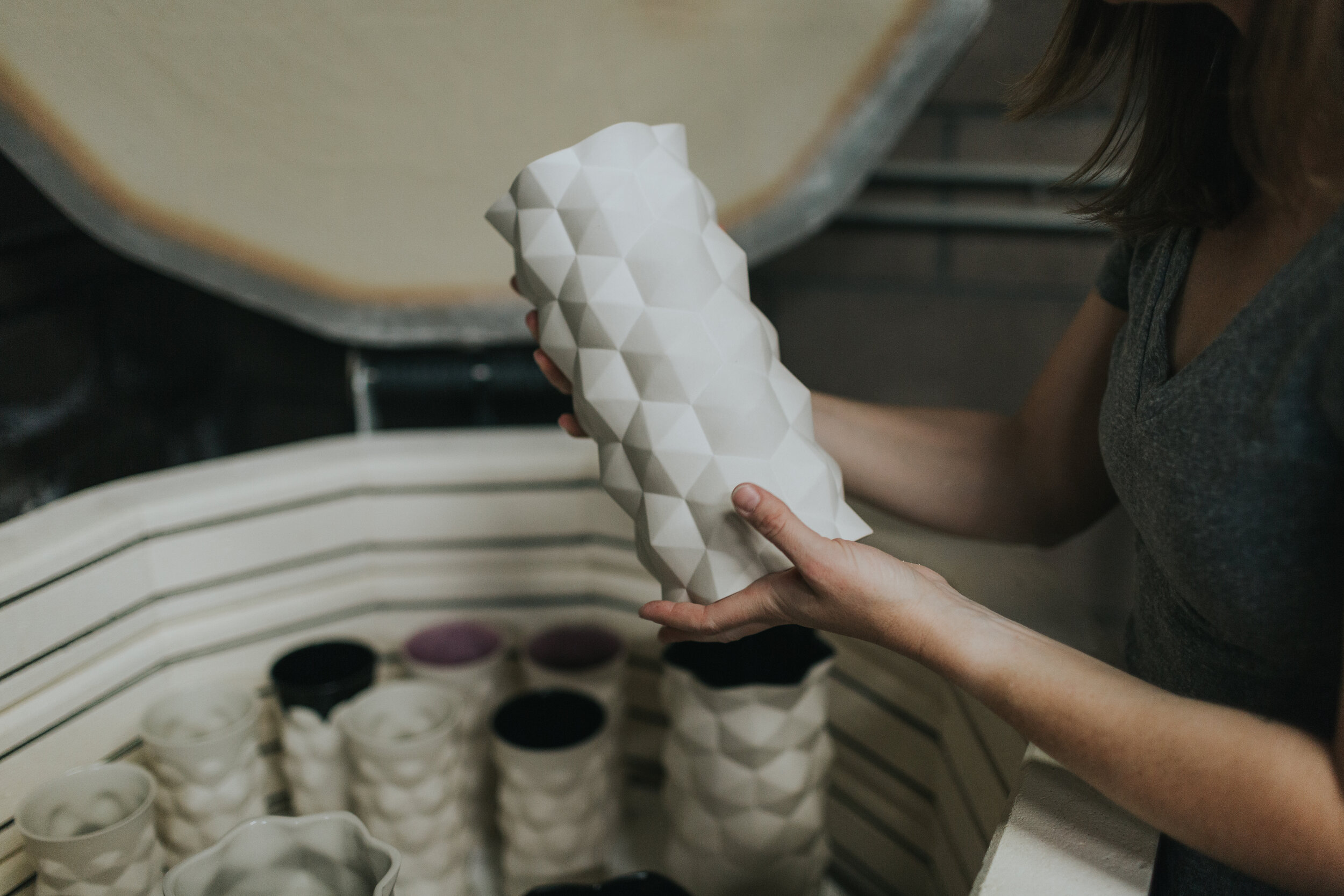
I particularly enjoyed photographing her pieces, both for their unique texture, and for the way their facets create highlights and shadows on the object.

Showing how pieces can be used, and creating lifestyle images is an important part of portraying any brand.
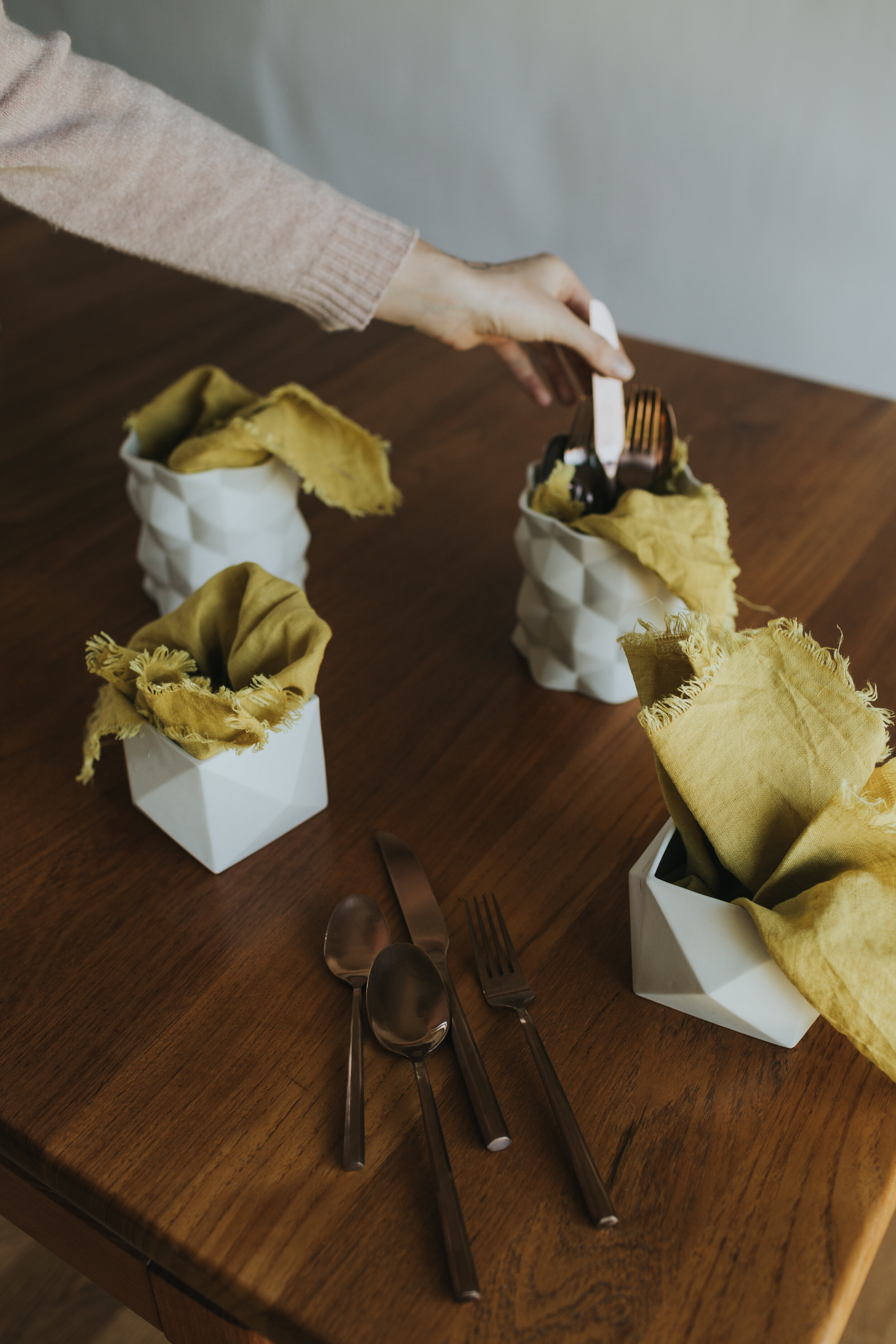
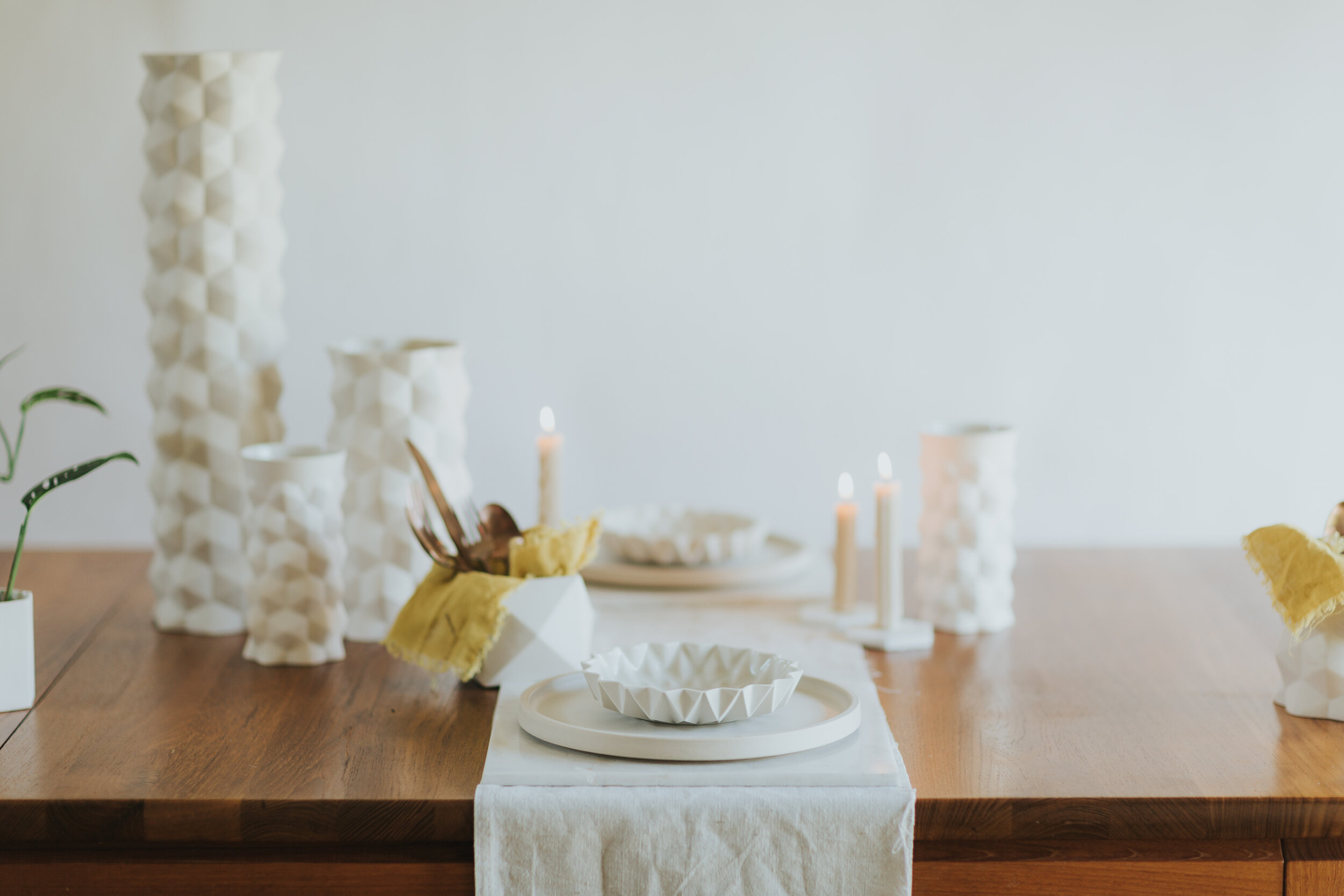
Showing how various pieces can be used, and combining them with props can support the aesthetic of the brand.
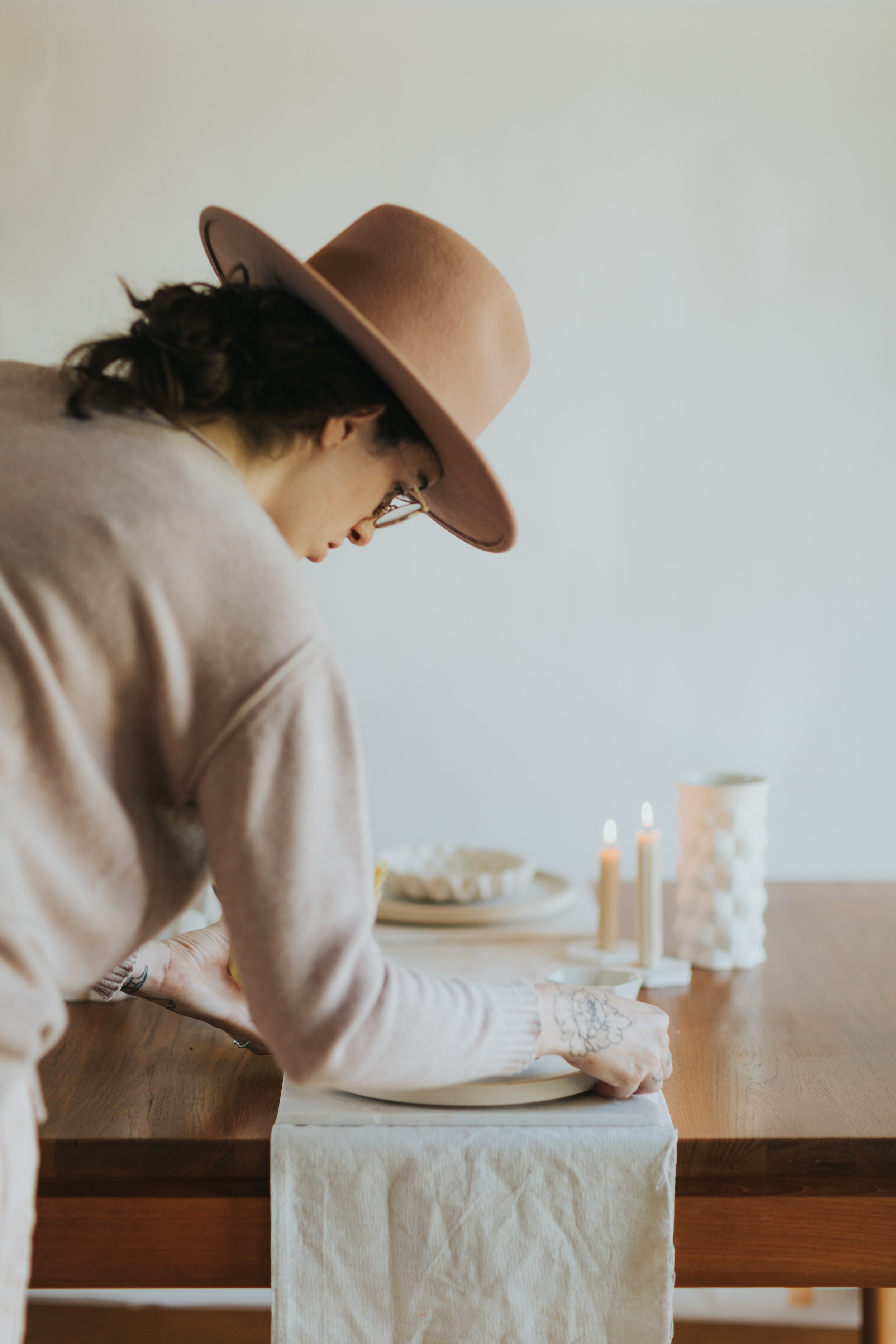
A big thank you to Michaela Carpenter of Aspen’s Local Coffee for stepping in as stylist for these tablescapes.
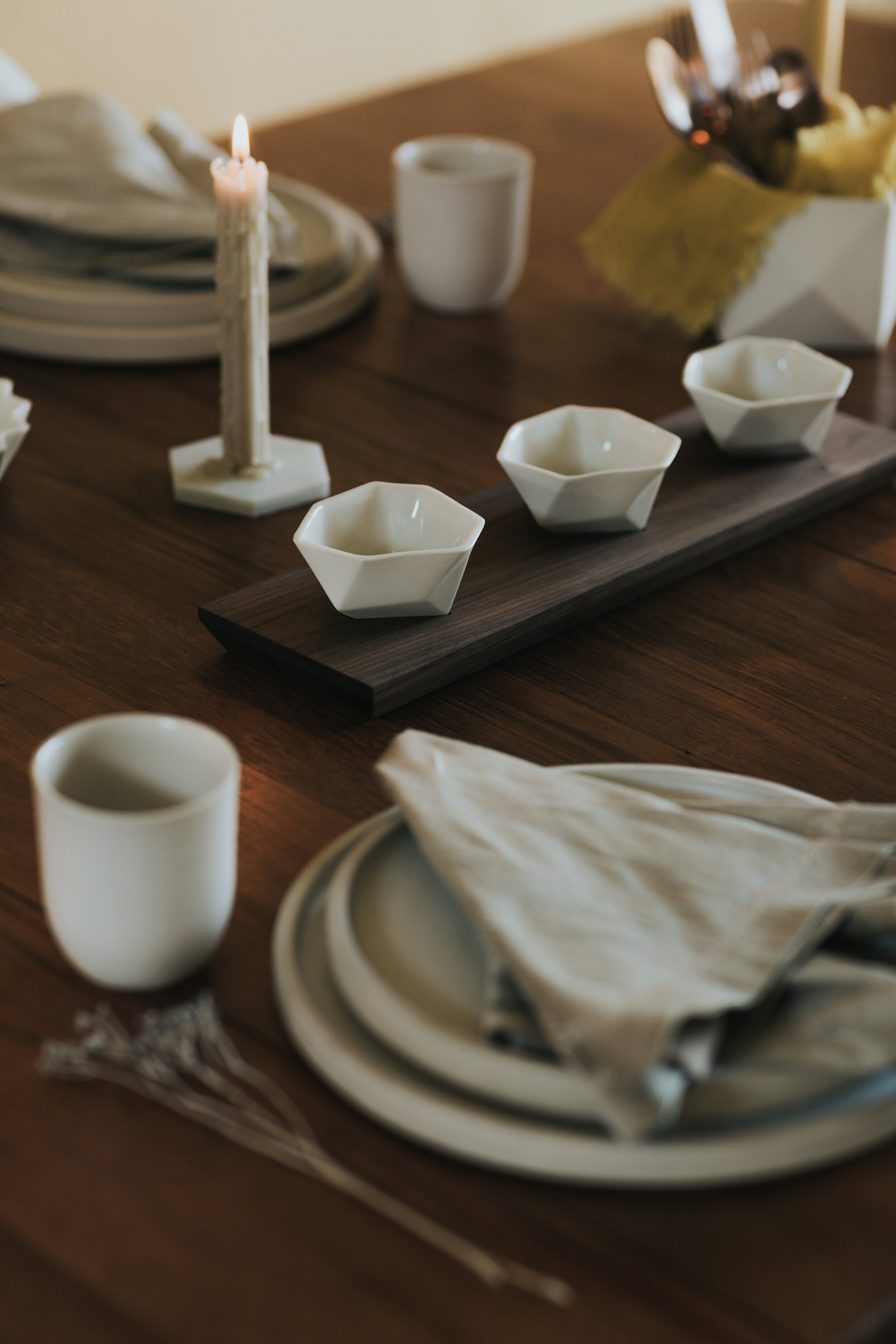
This snack tray was a collaboration with Carbondale artist, Kenichi Woodworking.
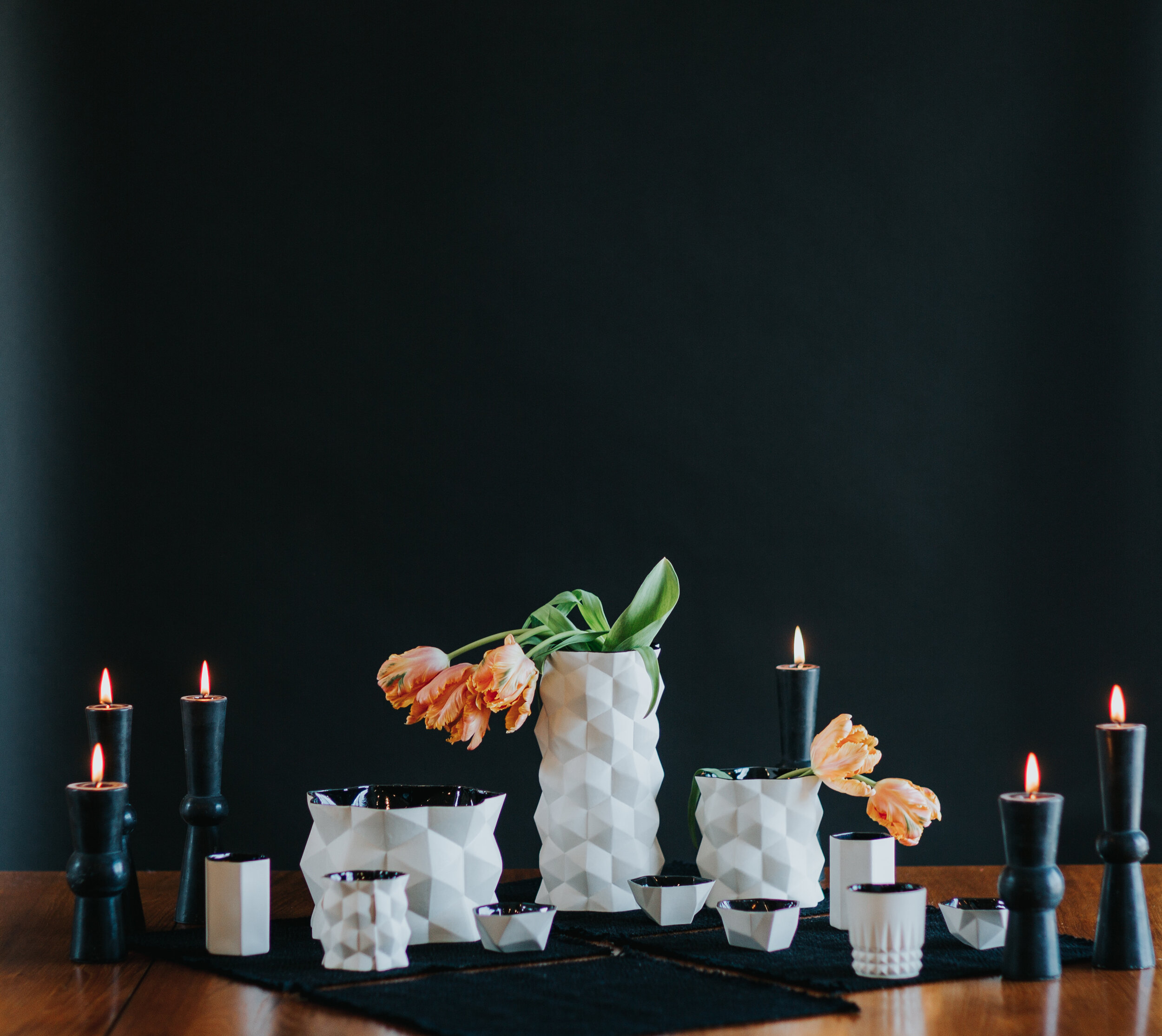
Here, we’ve showcased the black-glazed pieces in a moodier context.
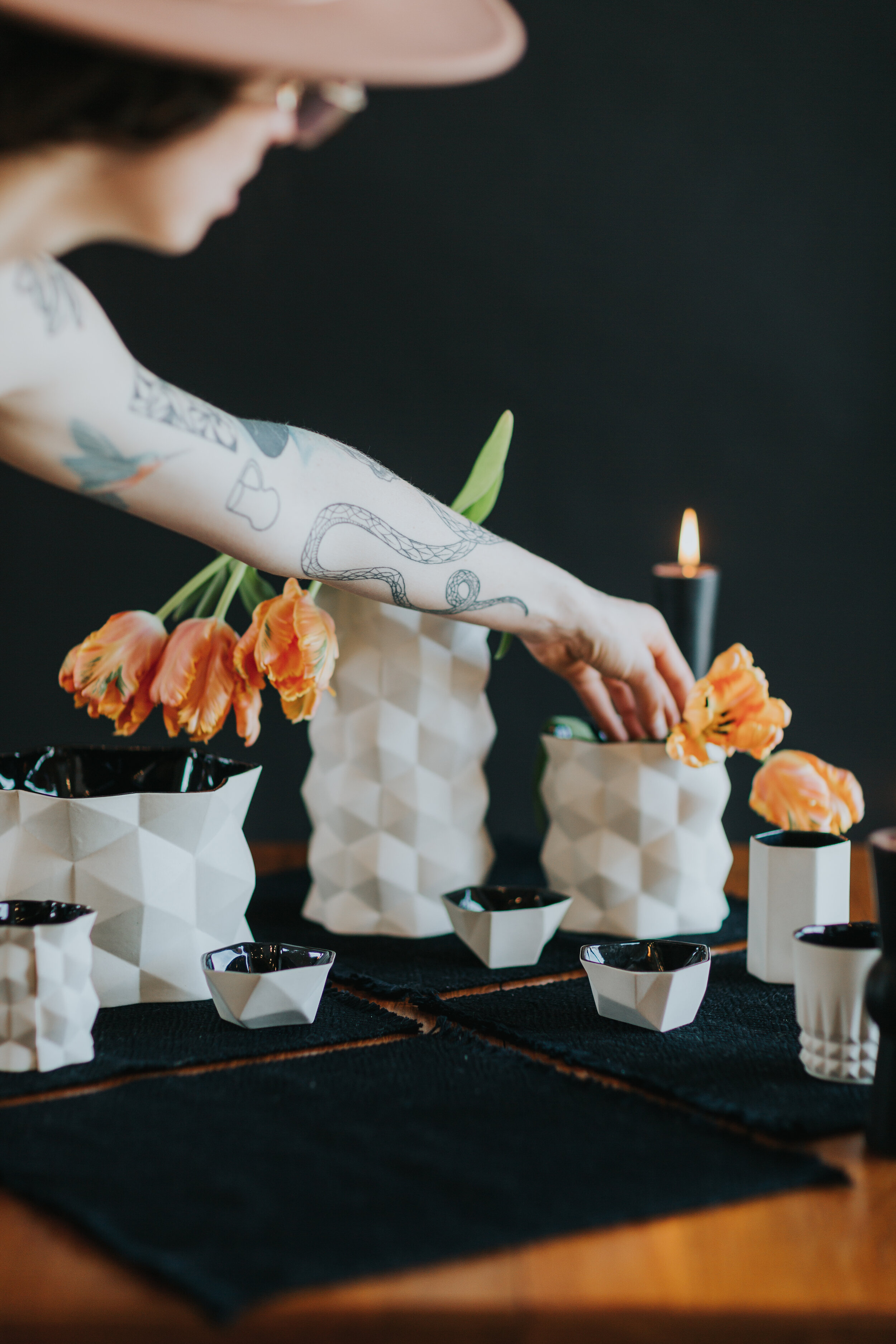
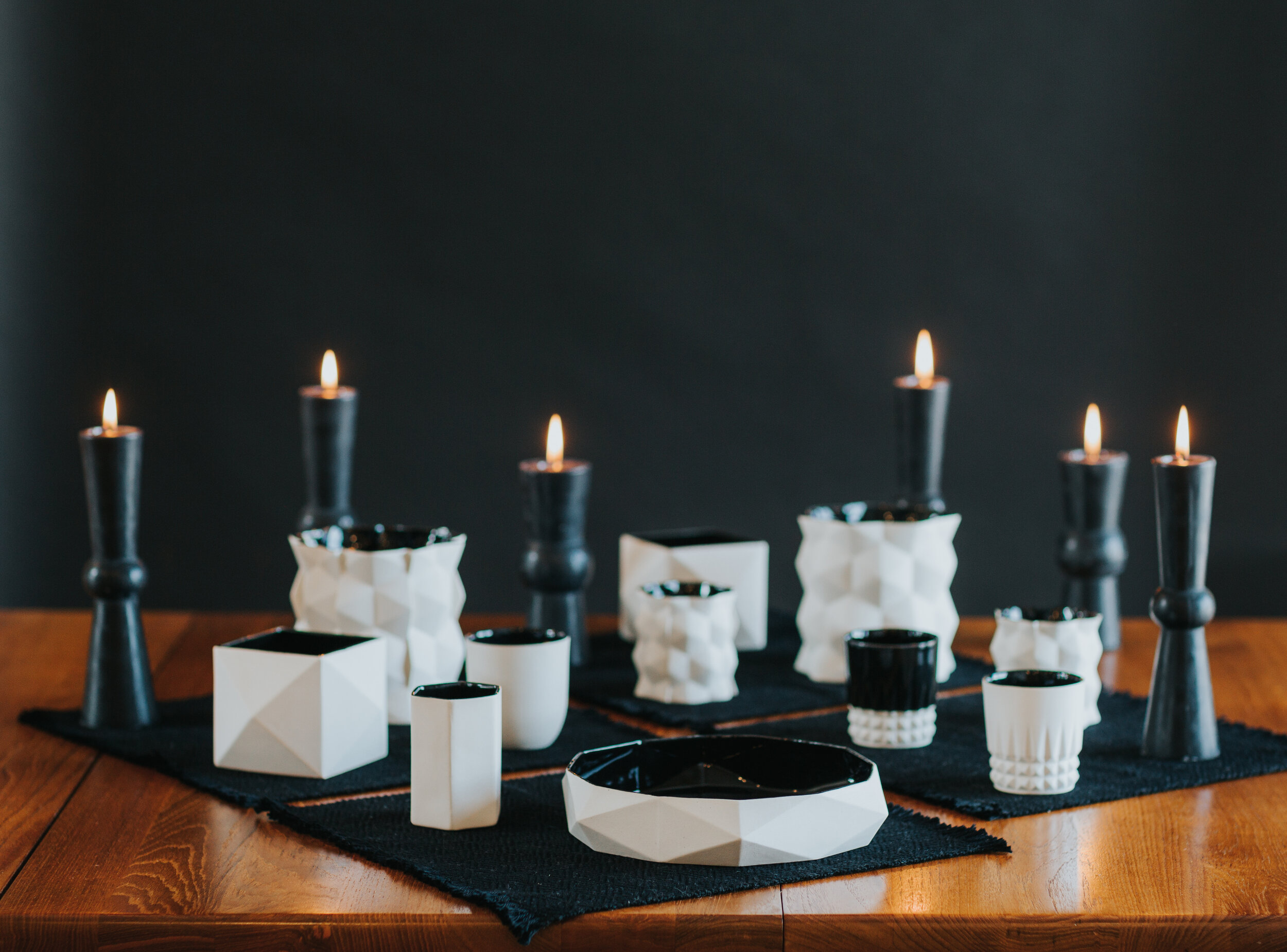

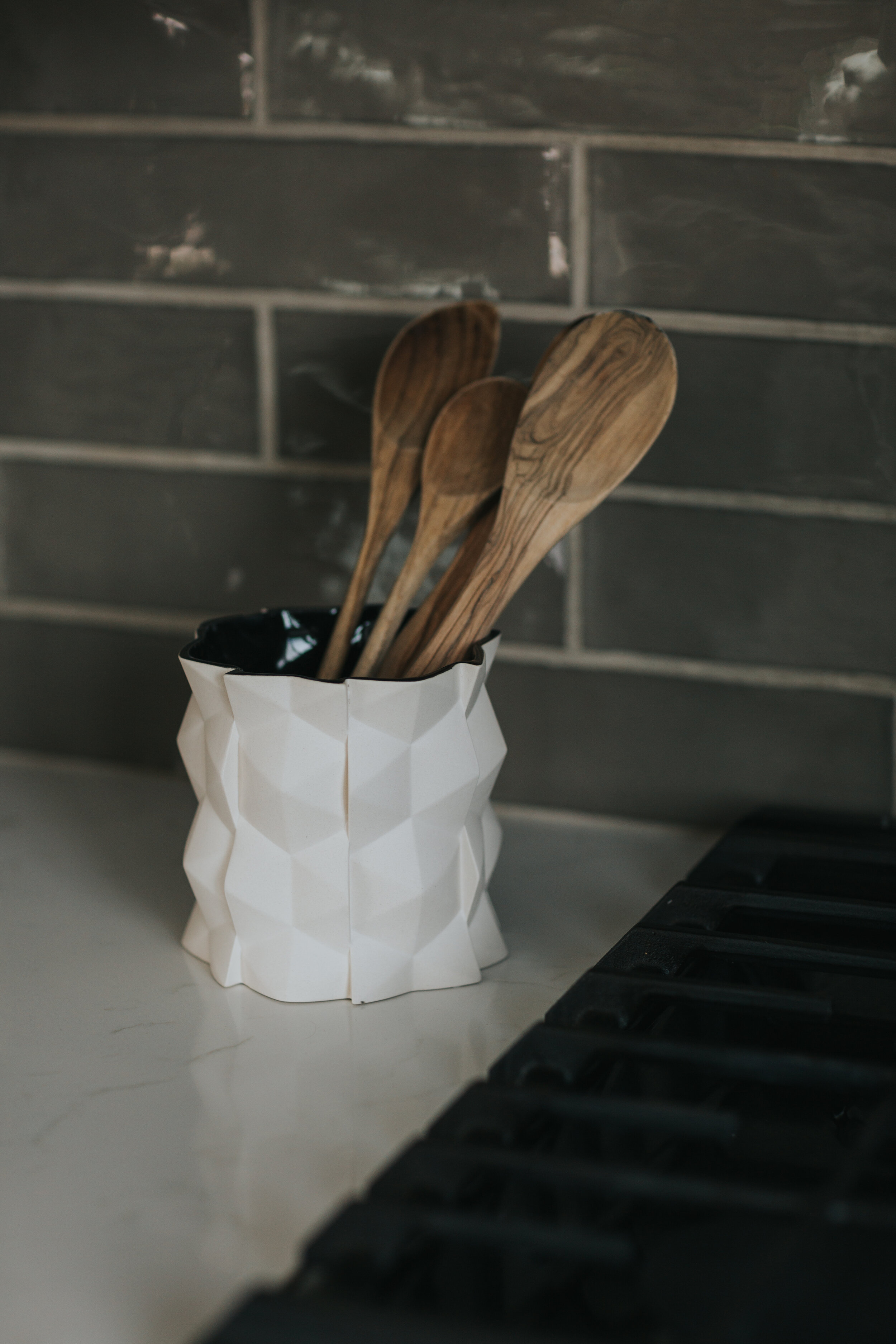
Showing the objects in use in a real kitchen is particularly useful for social media content and variety.
